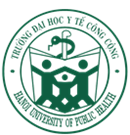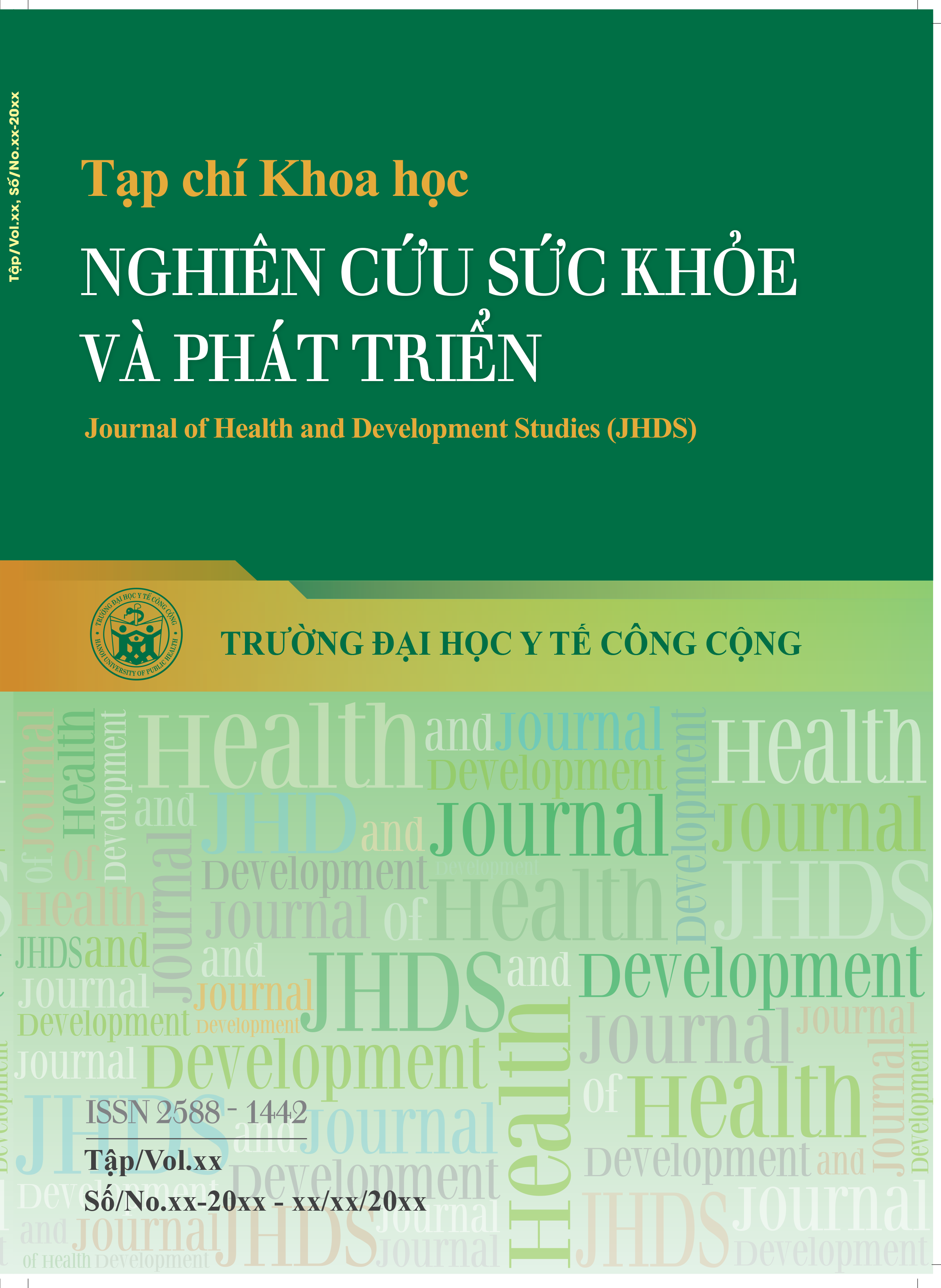Tạp chí
Khoa học Nghiên cứu Sức khỏe và Phát triển
(Journal of Health and Development Studies – JHDS)
Trường Đại học Y tế công cộng
ISSN (Print): 2588-1442
ISSN (Online): XXXX-XXXX
https://jhds.edu.vn
Drinking water quality and associated factors at water supply stations in Quang Ngai Province in 2022
- Mã bài báo : SKPT_23_049
- Ngày xuất bản : 30/08/2023
- Số trang : 41-49
- Tác giả : Tran Thi Kim Tai
- Lượt xem : ( 1299 )
Danh sách tác giả (*)
- Tran Thi Kim Tai 1 - Quang Ngai Provincial Center for Disease Control
- Tran Thi Tuyet Hanh 1 - Hanoi University of Public Health
Objectives: This paper aims to describe drinking water quality at water supply stations in Quang Ngai province according to Vietnam Standards (QCVN 01-1:2018/BYT) and to identify some associated factors affecting water quality.
Methods: The study used test results of 41 centralized water supply stations collected from Quang Ngai Center for Disease Control in December 2022 and compared them with QCVN 01-1:2018/BYT.
Results: 58.5% of stations had water quality that met QCVN 01-1:2018/BYT; 65.9% and 80.5% of stations with physicochemical and microbiological parameters met the standards. The parameters not meeting the standards were mainly nitrate content, hardness, chloride, taste, residual chlorine, Coliform and E. coli. In particular, 34.1% of stations did not meet the standard for the nitrate parameter. Private enterprises had the highest rate of meeting the standard (85.7%), followed by state enterprises (79.0%), private stations (25.0%) and cooperatives (14.3%). The Chi-square test showed that water supply stations had water quality checked, applied the right prices, trained operators in water supply, had a system of settling, filtering, disinfecting, and cleaning facilities and stations with operating time within five years had better water quality.
Conclusion: Water supply facilities, especially private stations and cooperatives need to improve their management, comply with regulations on internal inspection and pay attention to treating nitrate contamination. There should be a plan to send operators to specialized training in water supply. It is necessary to invest in the construction of a treatment and disinfection system, to replace the degraded, leaking distribution pipeline and to make an annual plan for the maintenance and cleaning of water supply facilities. The authorities need to provide specialized training on water supply and guide the management regulations for facility owners and operators. At the same time, there should be sanctions and strict handling measures for domestic water supply stations that violate regulations.
- DOI : https://doi.org/10.38148/JHDS.0704SKPT23-049
- Chủ đề : Sức khỏe môi trường
- Loại bài báo : Nghiên cứu gốc
- Chuyên nghành : Chuyên Ngành Y
 Thông tin liên hệ : Tran Thi Tuyet Hanh
Thông tin liên hệ : Tran Thi Tuyet Hanh Email : tth2@huph.edu.vn
Email : tth2@huph.edu.vn Địa chỉ : Hanoi University of Public Health
Địa chỉ : Hanoi University of Public Health
Bài báo liên quan
- The care needs of dementia patients in Nam Dong District, Thua Thien Hue Province: An observational study using the Camberwell Assessment of Need for the Elderly questionnaire
- Preventive Measures Against Monkeypox: A Scoping Review
- How KoboToolbox versus Unipark platform are selected in data survey to detect child maltreatment in Vietnam: A discussion paper
- Respiratory function of workers at some wood factories in Bac Tu Liem district, 2022
- Mental health of people with and without disabilities in Vietnam during the COVID-19 pandemic
- Cause-specific mortality in A6 death registration system: results from a population-based study in Hanoi 2017, Vietnam
- Stress situation and associated factors among nursre in clinical departments at Sa Dec General Hospital, Dong Thap province, in 2021
- Short-term effects of air pollution on respiratory hospitalizations in Ha Nam, during 2018-2020
- Quality of life of type 2 diabetes outpatients and the associated factors: A cross-sectional study at Ha Dong General Hospital in 2020
- Perception of patient safety and associated factors among health staff: A cross-sectional study in some hospitals in Vietnam
- Applying tools to support human resource management in HIV/AIDS prevention and control in 7 provinces: Initial results on the appropriateness and scalability
- Stress of the mothers in caring for children with developmental disabilities and some related factors
- Stress among nurses and associated factors during the COVID-19 pandemic in Hanoi, Vietnam, in 2022
- Drinking water quality and associated factors at water supply stations in Quang Ngai Province in 2022
- Association between retinol intake and risk of gastric cancer: a case-control study in a Korean population
- Compliance with National guidelines for antibiotic prophylaxis use in surgery: A case study in Thu Duc City Hospital, South of Vietnam
- Economic, Social, and Mental Health Difficulties Among High School Students in Hanoi During the COVID-19 Lockdown Period
Bài viết mới nhất
- Một số trang web hữu ích đối với các nhà khoa học
- Dành cho chuyên gia
- Tạp chí Khoa học Nghiên cứu sức khỏe và Phát triển duyệt tối đa 1,0 điểm ngành Y trong Danh mục Tạp chí khoa học được tính điểm của Hội đồng giáo sư Nhà nước
- CHÚC MỪNG NGÀY BÁO CHÍ CÁCH MẠNG VIỆT NAM (21/6)
- GS.TS Hoàng Văn Minh - Hiệu trưởng Nhà trường 'lọt top' nhà khoa học có chỉ số trích dẫn hàng đầu thế giới

 File toàn văn
File toàn văn